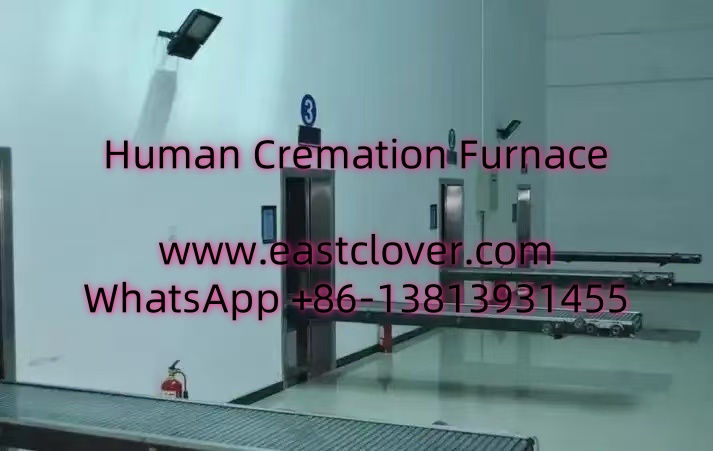Advanced Digital Mobile Human Cremation Furnaces: Analysis End-of-Life Services
The funeral industry is undergoing a quiet but profound transformation, driven by advancements in technology and a growing demand for sustainable, efficient, and dignified end-of-life services. Among the most groundbreaking innovations in this space is the advent of advanced digital mobile human cremation furnaces. These systems integrate automated diagnostics, next-generation cremation technology, and portability to address longstanding challenges in the sector. This news explores how these developments are reshaping funeral services, offering unprecedented precision, environmental benefits, and operational flexibility.
The Evolution of Cremation Technology
Traditional cremation methods have relied on stationary furnaces that often lack real-time monitoring or eco-friendly features. These systems, while effective, face limitations in energy efficiency, emissions control, and adaptability to modern demands. In contrast, advanced mobile digital cremation furnaces leverage automation, IoT connectivity, and AI-powered diagnostics to optimize every stage of the process. Their mobility allows deployment in remote areas, disaster zones, or temporary facilities, making cremation services more accessible while reducing logistical burdens.
Core Features of Next-Gen Cremation Systems
1. Mobility and Modular Design
Mobile cremation units are engineered for transportability, often housed in climate-controlled trailers or modular containers. This design enables rapid deployment to underserved regions or areas affected by crises. For instance, during pandemics or natural disasters, these units can provide critical services without requiring permanent infrastructure. Advanced insulation and compact engineering ensure compliance with safety standards even in motion.
2. Automated Diagnostics and Predictive Maintenance
A hallmark of these systems is their self-diagnostic capability. Sensors monitor combustion efficiency, temperature gradients, and emission levels in real time. Machine learning algorithms analyze this data to predict component wear, such as refractory brick degradation or burner malfunctions. This proactive approach minimizes downtime—critical for facilities with high service demands—while ensuring regulatory compliance.
3. Digital Control Systems
Cloud-connected interfaces allow operators to remotely adjust temperatures, track cremation progress, and generate compliance reports. User-friendly dashboards display metrics like energy consumption and emissions, simplifying adherence to environmental regulations. Biometric access controls and blockchain-based record-keeping enhance security and transparency for families.
4. Sustainability Advancements
Next-gen furnaces prioritize eco-efficiency through:
- Reduced Emissions: Catalytic converters and afterburners neutralize harmful particulates, cutting CO2 output by up to 40% compared to conventional units.
- Energy Recovery: Waste heat is repurposed to preheat incoming air or power auxiliary systems, slashing fuel consumption.
- Alternative Fuels: Compatibility with biofuels and hydrogen blends further reduces environmental impact.
Integration with IoT and AI
These systems are not standalone machines but nodes in a connected ecosystem. IoT integration enables:
- Real-time collaboration between funeral homes, crematories, and regulatory bodies.
- Family portals that provide encrypted updates on the cremation process.
- Predictive analytics for scheduling maintenance during low-demand periods.
AI algorithms further refine operations by analyzing historical data to optimize combustion patterns, reducing fuel use while maintaining ethical and cultural sensitivities.
Impact on End-of-Life Services
The adoption of mobile digital cremation furnaces is reshaping the industry in three key areas:
- Accessibility: Rural communities and developing regions gain access to dignified cremation services without costly facility investments.
- Transparency: Families receive verifiable, tamper-proof records of the cremation process, building trust in an industry historically plagued by scandals.
- Sustainability: Funeral homes reduce their carbon footprint while complying with tightening environmental regulations worldwide.
Case studies highlight success stories: A mobile unit in Scandinavia now serves nomadic Indigenous communities, while a U.S.-based network reduced operational costs by 22% through predictive maintenance.
www.southclover.com
Advanced digital mobile cremation furnaces represent more than technological progress—they redefine humanity’s approach to mortality. By merging mobility, automation, and environmental stewardship, these systems address logistical, ethical, and ecological challenges simultaneously. As populations grow and urbanize, such innovations will become indispensable in providing equitable, sustainable end-of-life care. The future of funeral services lies in technologies that honor both the departed and the planet they leave behind.
FAQs
How do mobile cremation units ensure safety during transport?
Units feature reinforced structural integrity, fire suppression systems, and GPS-enabled stability monitoring to prevent accidents.
Are these systems more expensive than traditional cremation furnaces?
Initial costs are higher, but long-term savings from fuel efficiency, reduced downtime, and regulatory compliance offsets the investment.
Can emissions from mobile units meet strict environmental standards?
Yes, advanced filtration and real-time monitoring ensure compliance with EU’s Best Available Techniques (BAT) and U.S. EPA guidelines.
How does automated diagnostics improve service reliability?
By predicting failures before they occur, facilities avoid unexpected shutdowns—critical when handling sensitive timelines for families.
Is human oversight still required?
Operators monitor systems remotely, but onboard AI handles routine adjustments. Human intervention is reserved for complex issues.

Comments are closed